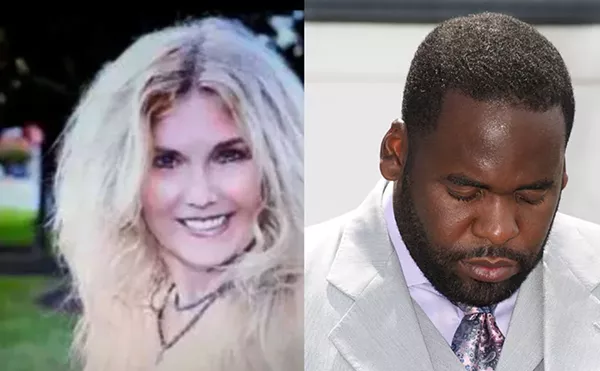
Audio By Carbonatix
[
{
"name": "GPT - Leaderboard - Inline - Content",
"component": "35519556",
"insertPoint": "5th",
"startingPoint": "3",
"requiredCountToDisplay": "3",
"maxInsertions": 100,
"adList": [
{
"adPreset": "LeaderboardInline"
}
]
}
]
In the middle of a particularly stale summer movie season, The Mask of Zorro arrives like a blast of fresh air, a welcome reminder that Hollywood can still produce a mainstream entertainment that invigorates instead of suffocates. And this action hero doesn't even need a gun.
The character Zorro, who first appeared in Johnston McCulley's 1919 novel, was ready-made for the movies. First embodied by Douglas Fairbanks Sr. in The Mark of Zorro (1920), he's been swashbuckling his way across screens ever since. The latest incarnation, directed with verve and gusto by Martin Campbell (GoldenEye), envisions Zorro as a cross between Robin Hood and Superman --while very much human, he often seems able to take flight.
There are actually two Zorros in this version: don Diego De La Vega (Anthony Hopkins), an aristocrat, and Alejandro Murrieta (Antonio Banderas), a thief. How they come together and pass the legacy from one generation to the next --and their reasons for donning the mask and persona of Zorro --drives the story. Although they are quite different in their backgrounds and temperaments, both are driven by similar motivations: political justice and personal revenge.
When The Mask of Zorro opens, in 1821, the Spanish --once a colonial power --are weakened and ready to relinquish the territory of California to Mexico. In one of his last acts, the Spanish Governor don Rafael Montero (Stuart Wilson) has arranged for public executions, in large part to flush out Zorro, who makes a triumphant appearance. But Montero has discovered that Zorro is actually don Diego and ruthlessly, methodically strips him of everything and everyone he loves.
Twenty years later, don Rafael returns from Spain with his feisty, independent daughter, Elena (Catherine Zeta-Jones), and a nefarious plan for establishing an independent California. In true movie fashion where lives conveniently intersect, don Diego encounters Alejandro --who has his own bitter agenda with Montero's right-hand man, Captain Love (Matt Letscher) --and begins training him to be the new Zorro.
The Mask of Zorro is unabashedly old-fashioned, full of heroic heroes, villainous villains, exciting fight scenes and a central romance whose heat doesn't need an explicit love scene to be palpable --a phenomenal swordplay-foreplay scene works even better. Mask also has the wit and sense of fun that's been missing since Richard Lester's terrific, boisterous 1970s musketeer films.
In addition to exceedingly well-staged and downright thrilling action sequences and pitch-perfect performances from Antonio Banderas, Anthony Hopkins and Catherine Zeta-Jones, The Mask of Zorro succeeds because the filmmakers remember that Zorro isn't just a man skillfully wielding a sword, but a righteous warrior whose arsenal happens to be well-stocked with ingenuity and panache.
Serena Donadoni writes about film for the Metro Times. E-mail her at letters@metrotimes.com.





